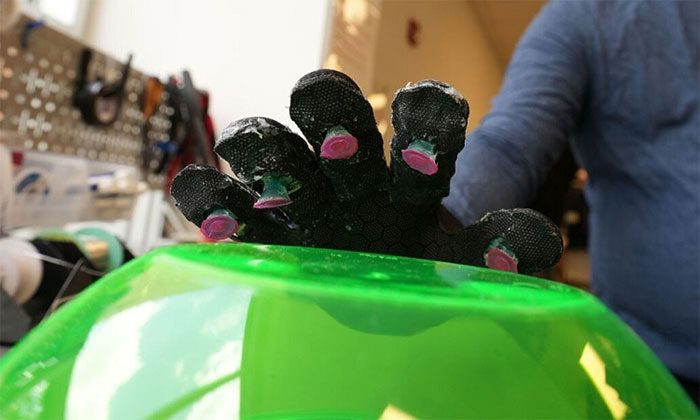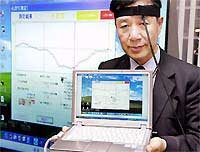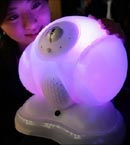Researchers at Virginia Tech have developed gloves that allow divers to securely grip objects or individuals underwater, such as during rescue operations or shipwreck recoveries.
The research team tests the octopus-inspired gloves. (Video: Virginia Tech)
The glove design is inspired by octopus tentacles, featuring robotic suction cups equipped with sensors that detect nearby objects. When a surface is detected nearby, the sensors send signals to the operator to activate the suction function. The research team hopes to apply this product in underwater activities that require gripping.
Humans are not naturally equipped to operate underwater, which is why inventions like swimming goggles and swimsuits exist. Rescue divers, underwater archaeologists, civil engineers, and salvage workers all require good grip to perform their tasks. However, sometimes the targets are too slippery to hold securely, reducing work efficiency.
Michael Bartlett and his colleagues drew inspiration from octopuses in nature to address this issue. Octopuses have eight long tentacles capable of grasping objects with any surface underwater. Their tentacles are covered with suction cups that resemble pump nozzles, controlled by a muscular and nervous system. Once the outer rim of the suction cup adheres to an object, the octopus can use its muscles to squeeze or release the cup-shaped area behind the rim to increase or decrease pressure. Multiple suction cups working together create extremely strong adhesion.

Suction cups designed to adhere to flat, curved, smooth, and rough surfaces…
“Interestingly, octopuses control over 2,000 suction cups on their eight tentacles through processing information from diverse chemical and mechanical sensors. They truly combine their ability to adjust adhesion, sensing, and control to manipulate objects underwater,” Bartlett shared.
The team at the Soft Structures and Materials Laboratory developed suction cups with flexible rubber tubes covered with a soft membrane. They described their method in the journal Science Advances on July 13. The suction cups are designed to adhere to flat, curved, smooth, and rough surfaces of various shapes and sizes using pressure, just like octopuses in nature. Subsequently, researcher Eric Markvicka from the University of Nebraska-Lincoln added a series of small optical LIDAR proximity sensors to detect nearby objects. The suction cups and LIDAR sensors were then connected through a microcontroller that simulates the octopus’s nervous and muscular systems.
When attaching the suction cups to the gloves, engineers tested the product with lightweight objects, using only one sensor at a time. The gloves could quickly pick up and release flat items, metal toys, cylinders, spoons, and ultra-soft hydrogels. After reconfiguring the sensor network to use all sensors for object detection, the gloves easily grasped items like plates, boxes, and large bowls. Flat, cylindrical, protruding, and spherical objects made of both hard and soft materials were also lifted, even if the user did not grip tightly. Bartlett and his team hope that the glove prototype can play a role in developing underwater robots, assistive technologies, healthcare, and the production of wet objects.




















































